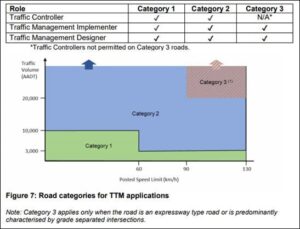In addition to our highly trained and skilled staff, WARP utilises industry-leading traffic control products and management equipment:
Portaboom
Portabooms are portable boom gates that are used for temporary traffic control scenarios and were introduced nation-wide in 2016 by the Australian Roads and Research Board. Portabooms are a cost-effective and innovative alternative by acting as a physical barrier to protect work zones. This reduces the need for traffic controllers to stand on a stop/slow bat for hours on end, enhancing fatigue management and site safety. Motorists will not have to rely on the instructions of a traffic controller on the road. Instead, personnel can control traffic in safer positions and focus on traffic management on site, such as vehicle and plant movement and pedestrian activity.
Variable Message Signs
Variable Message Signs are used commonly for a number of traffic control and management projects from roadworks, events and notifying road users of any upcoming hazards. WARP utilises VMS for various projects to provide real-time communication for road users, prompting them to slow down and proceed with caution as they approach the worksite or event.
Hostile Vehicle Mitigation: Archer 1200 Barrier
Developed in the United States by the Meridian Rapid Defence Group, the Archer 1200 Barrier can successfully stop a vehicle travelling at 48kmph. These barriers are ideal for areas of mass gatherings and can assist with crowd control, protecting pedestrians in high traffic areas. Their sleek low-profile design and outstanding mobility mean that a single person can close the main road in just 10 minutes without heavy equipment to minimise road closures. Pedestrian flow is not impeded and if emergency vehicles need to enter, the barriers can quickly be moved to allow access.
Temporary Traffic Management Application Categories
A road categorisation system has been adopted in the AGTTM based on the New Zealand road levels. While all works on roads are considered high risk, the categorisation into three categories allows design practices and training to be tailored to the different risk levels at each category. There are three core TTM defined roles with three road categories:


